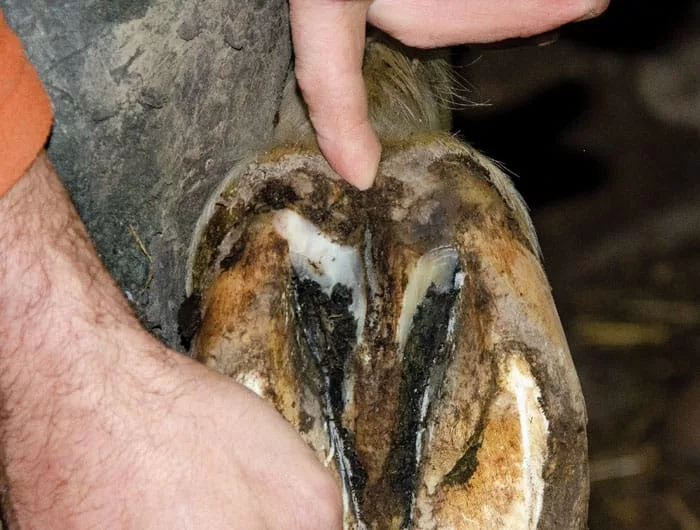American Farriers Journal
American Farriers Journal is the “hands-on” magazine for professional farriers, equine veterinarians and horse care product and service buyers.

Unsanitary living conditions and excessive hoof dampness are largely to blame for thrush. Cleaning the bottom of the foot and allowing it to dry out are important.
Proportionally speaking, the frog is close to one of the smallest structures in the equine body. Yet, despite its size, it plays a central role in maintaining healthy, sound horses. A healthy frog shares in the load-bearing function of the hoof and absorbs concussion each time the hoof contacts the ground.
In healthy hooves, the triangular-
shaped frog tissue expands and contracts within each stride, pushing dirt and debris out of the crevice known as the frog sulci. The sulci crevices serve as a self-cleaning mechanism to “pop” foreign materials out of the hoof.
When the central sulci or the grooves on either side of the frog are compromised, the hoof structure is predisposed to developing thrush. When the sulci are deep and if the cornified frog has ragged edges or pockets, the frog has an increased risk for anaerobic bacteria to invade and deteriorate healthy tissue.
Unsanitary living conditions and excessive hoof dampness are largely to blame for thrush, so encouraging horse owners to keep horse hooves clean and give the hoof time to dry out is a fundamental horse-keeping skill.
“We see a lot of thrush here in Missouri because of the snow and mud with our often wet…